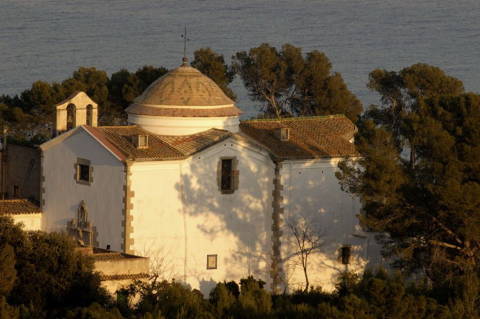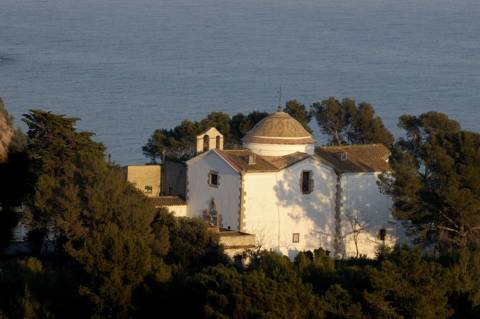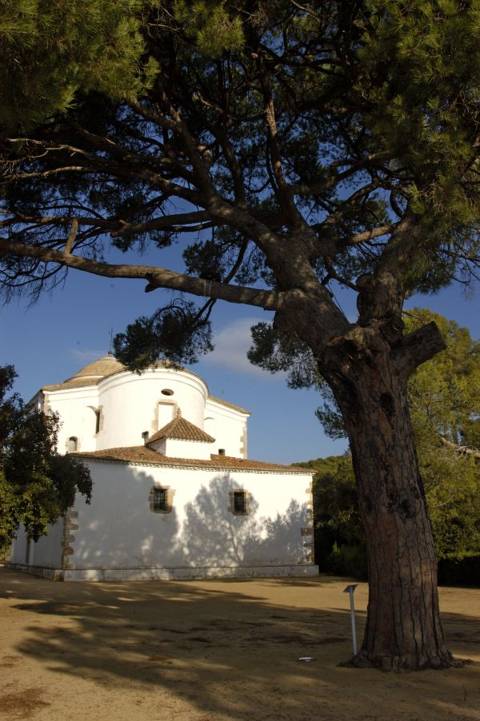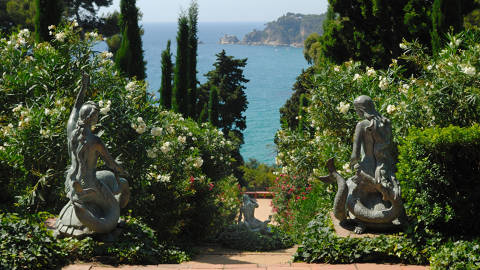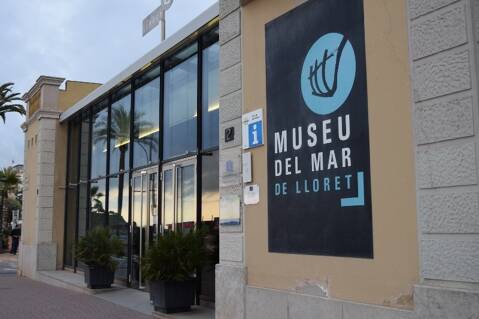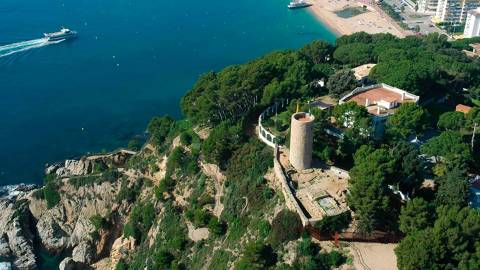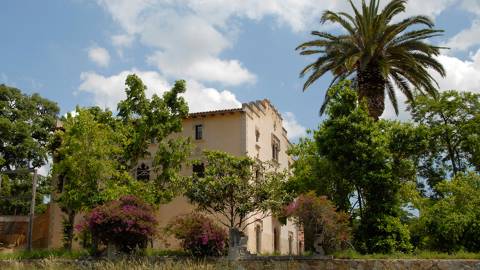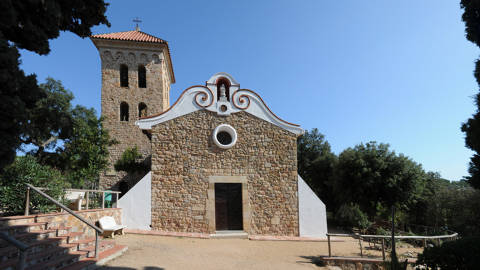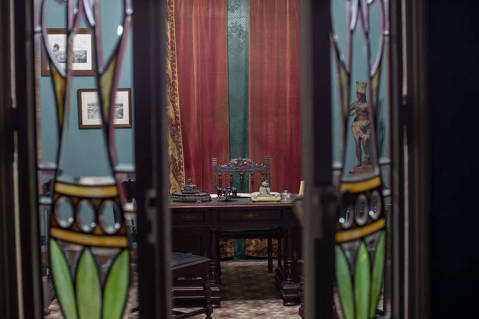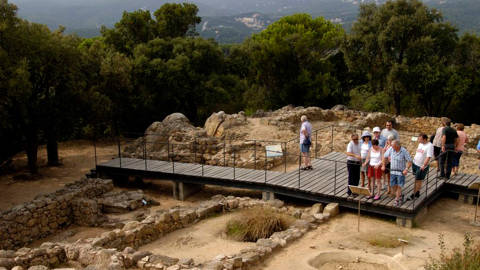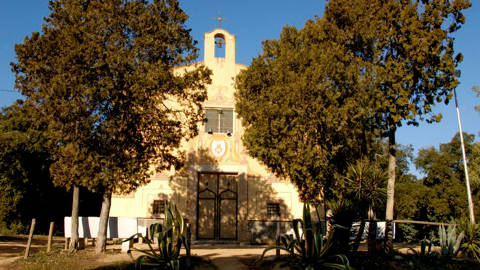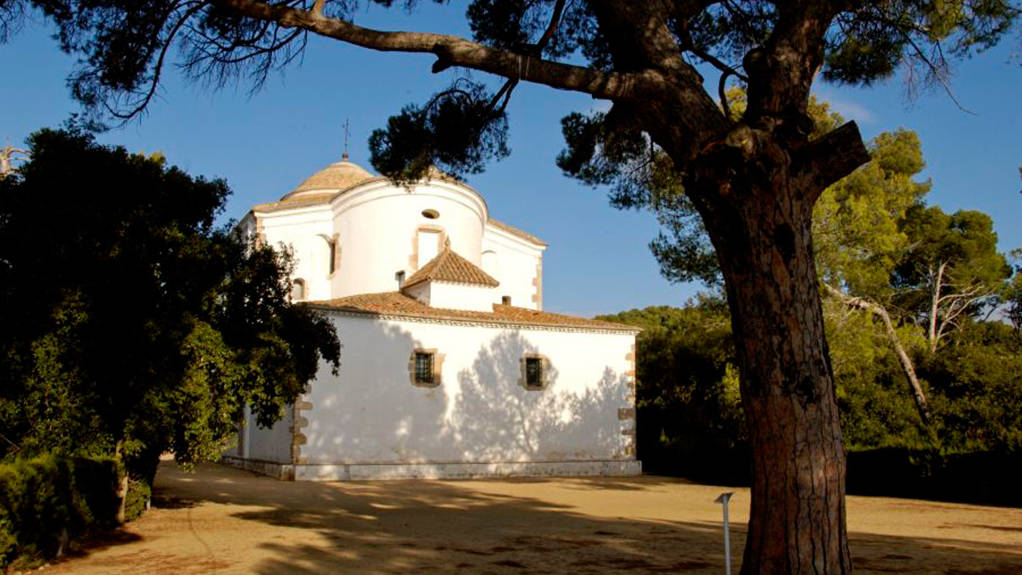
Santa Cristina - Treumal
Chapel of Santa Cristina
The natural setting
Two wonderful beaches can be found in this area, namely Santa Cristina and Treumal. Most of the ten-hectare estate is made up of typical Mediterranean woodland, with a wide variety of tree and plant species, for which there are information signs in the busiest areas, along with local wildlife.
The square that houses the centenary pine tree offers spectacular coastal views and has been the chosen venue for many important events, such as the Council of the Government of Catalonia, held in 1934, according to the faïence plate that commemorates it. The Sorolla vantage point is situated close to this square. It is here that the painter produced the study that is the background of the painting Cataluña: El pescado, in the Vision of Spain collection of the Hispanic Society of New York. Right next to the beach a small stone hut has been preserved. This building, which is more than 150 years old, served as a fishermen’s shelter.
The chapel
The present-day chapel was built by Lloret’s townsfolk through their own efforts and means in 1764, due to the devotion that this seafaring town has always had for its patron saint. This building replaced a previous one that had stood since 1354. Remains have been found from Roman times, when there must have been a settlement there. The chapel is in the typical baroque style of the second half of the 18th century. The main altar in polychrome marble with the painting of the martyrdom of the saint, are of Genoese origin. A ship-owner from Lloret who lived in Genova donated them to the town after carrying them from Italy in his ships. Above the main entrance, scenes depicting the martyrdom of Santa Cristina are sculpted in stone. The chapel houses the sacred relics of Santa Cristina, patron saint of Lloret. It also houses an important collection of ex-votos, noteworthy examples being the 18th miniature ships that decorate the main nave. Other elements worthy of mention include the paintings, the 1422 parchment, the historical archive and the panels of the old Renaissance altarpiece. The Confraternity of Santa Cristina is entrusted with the upkeep of the chapel, along with its associated traditions: the Festival of Pardons, the Procession of Santa Cristina, featuring the S’Amorra Amorra regatta, and the Square Dance or Dance of the Almorratxes (multi-spouted bottles).
The procession of 24 July
Every year, on 24 July, a maritime procession involving a large variety of boats carrying a statue and relic of Santa Cristina sails from Lloret to Santa Cristina beach, arriving together with the llaguts or rowing boats that take part in the S’Amorra Amorra regatta, a traditional competition between nine clubs that represent the ancient guilds. The procession then follows the path up to the chapel and is composed of musicians, the statue and relic of Santa Cristina, the priest, local dignitaries, the flags of the nine rowing clubs, members or directors of the Confraternity of Santa Cristina, the obreres with the “little angels” (children) and all those accompanying them. On arriving at the chapel, a mass is held in honour of Santa Cristina and the Cant dels Goigs (a poetic composition in honour of the saint) is sung. Following the mass a traditional fisherman’s stew is served to more than a thousand people. The procession then makes its way back to Lloret Parish Church in the same way. Records show that the procession dates back to 1607.
El Ball de Plaça (Square Dance)
In the evening of 24 July, the elegantly dressed obreres (four girls chosen each year from the many that apply) dance the Square Dance with their partners. This ancient ceremonial dance is also known as the Dance of the almorratxes, a kind of glass bottle containing perfume and a white flower that the obreres smash on the ground, emulating (according to legend) a Christian girl who used this gesture to reject her Muslim suitor, at the time when the Barbary Corsairs wreaked havoc on the Catalan coast. The dance ends with the eight dancers parading around the square with their arms linked. This dance has evolved over the centuries. Historical records indicate that it dates back to 1592. The names of the first known obreres date from 1764.
The “S’amorra amorra” regatta
This regatta is a traditional competition between nine local rowing clubs that represent ancient guilds or confraternities. It consists of a race from Lloret beach to Santa Cristina beach. The crews raise their oars as they sing the Salve Regina hymn and the starting signal is given once the belfry of the Chapel of Sant Pere de Bosc, situated on a hill further inland, comes into view. The boats are assigned their starting positions in a late-night draw that takes place in the Town Hall Square on 23 July. The crews are composed of a cox and eight oarsmen who row intensely across a distance of approximately 2.5 kilometres to Santa Cristina beach. There is no winner’s trophy but simply the honour of a victory that is highly prized among the competing teams. The maritime procession already existed in the 16th century and the rowing boats carried the cortège, composed of the clergymen, dignitaries, obreres, musicians and others. “Amorrar” is the verb used to indicate that bow of a rowing boat has reached the shore. The historical “war cry” of the oarsmen was “Amorra, amorra, sa relíquia! Amorra!”. It would appear that in ancient times the winners received a lamb as a prize, which may be the origin of the present-day “stew” that is served after mass in the Plaça del Pi of the Chapel of Santa Cristina. Once the return procession to Lloret beach has been completed, a second regatta takes place with the same boats, this time with women’s crews.


